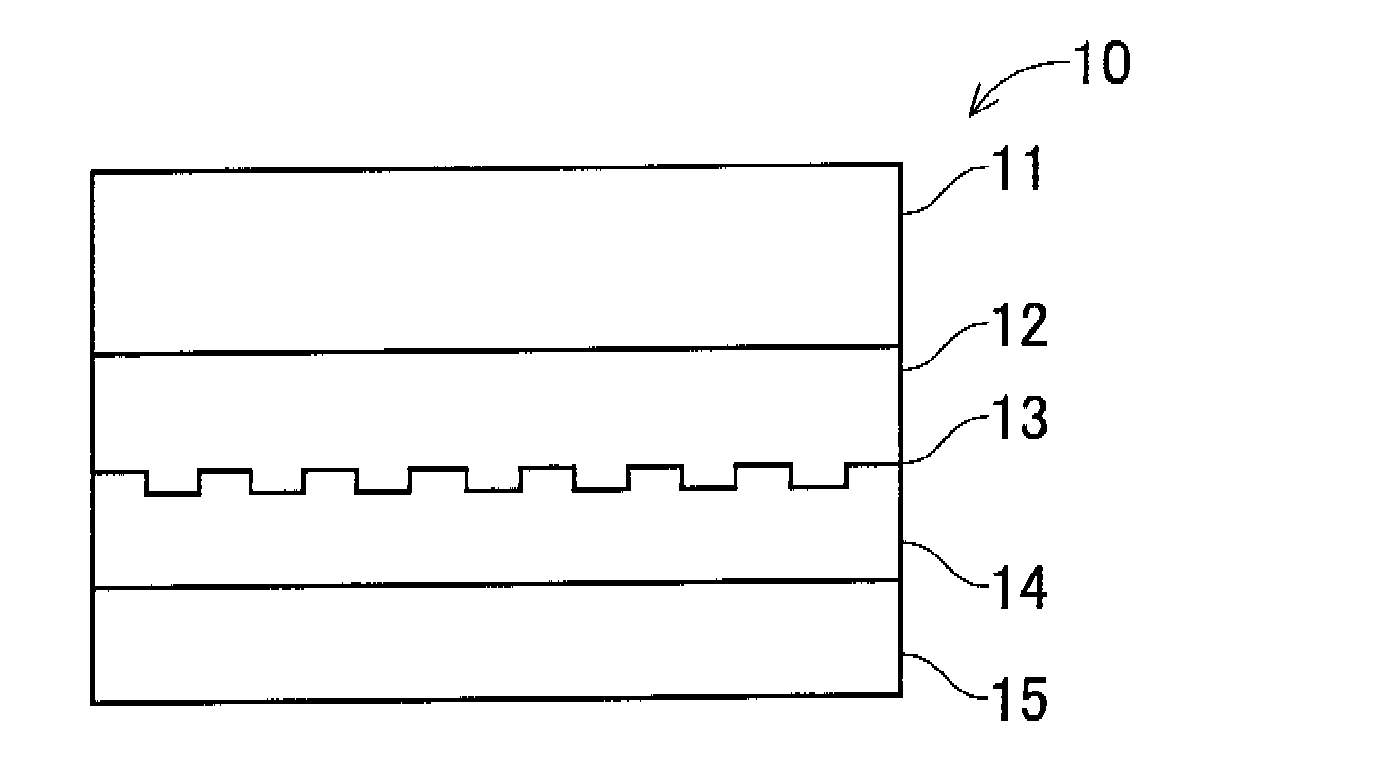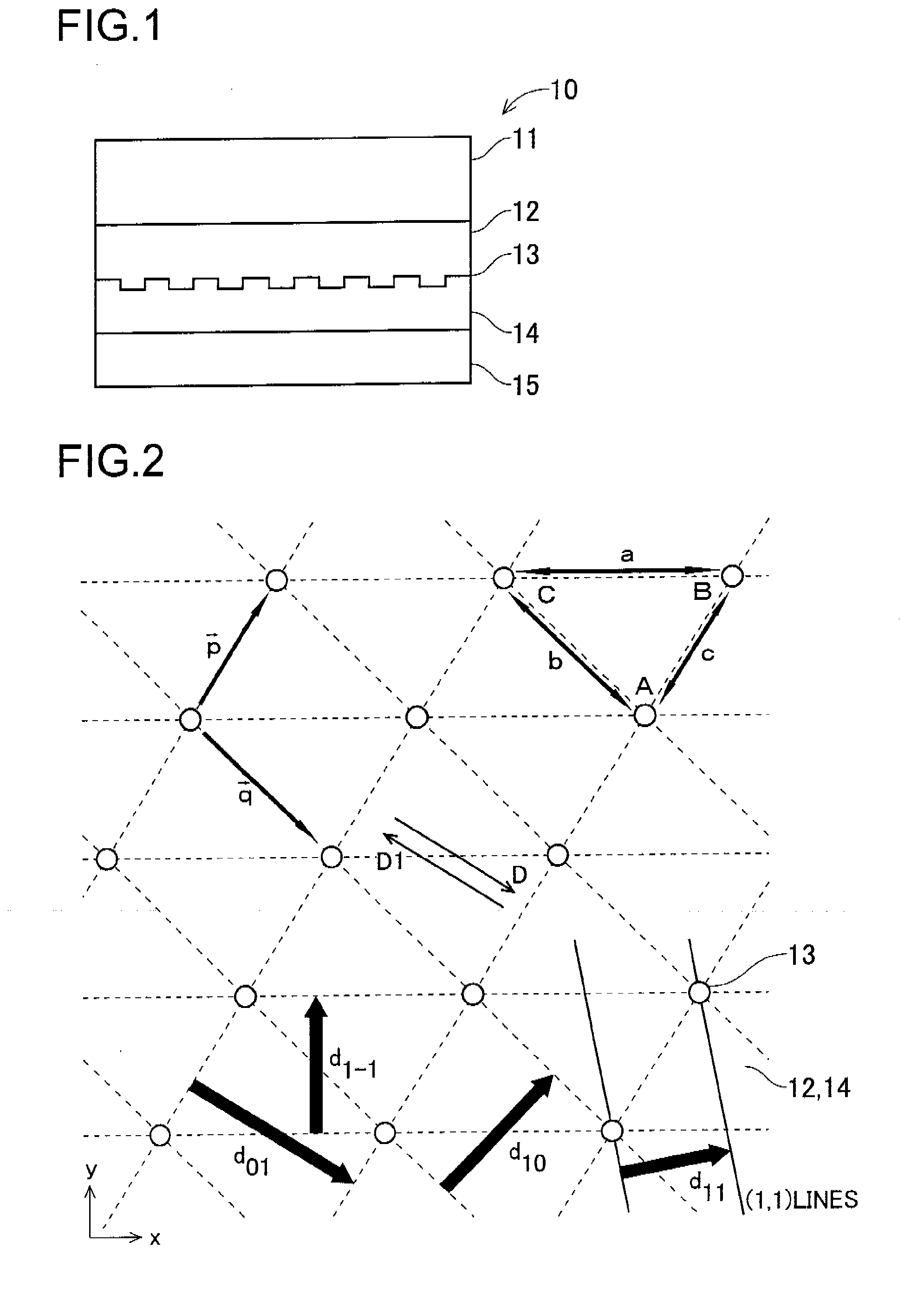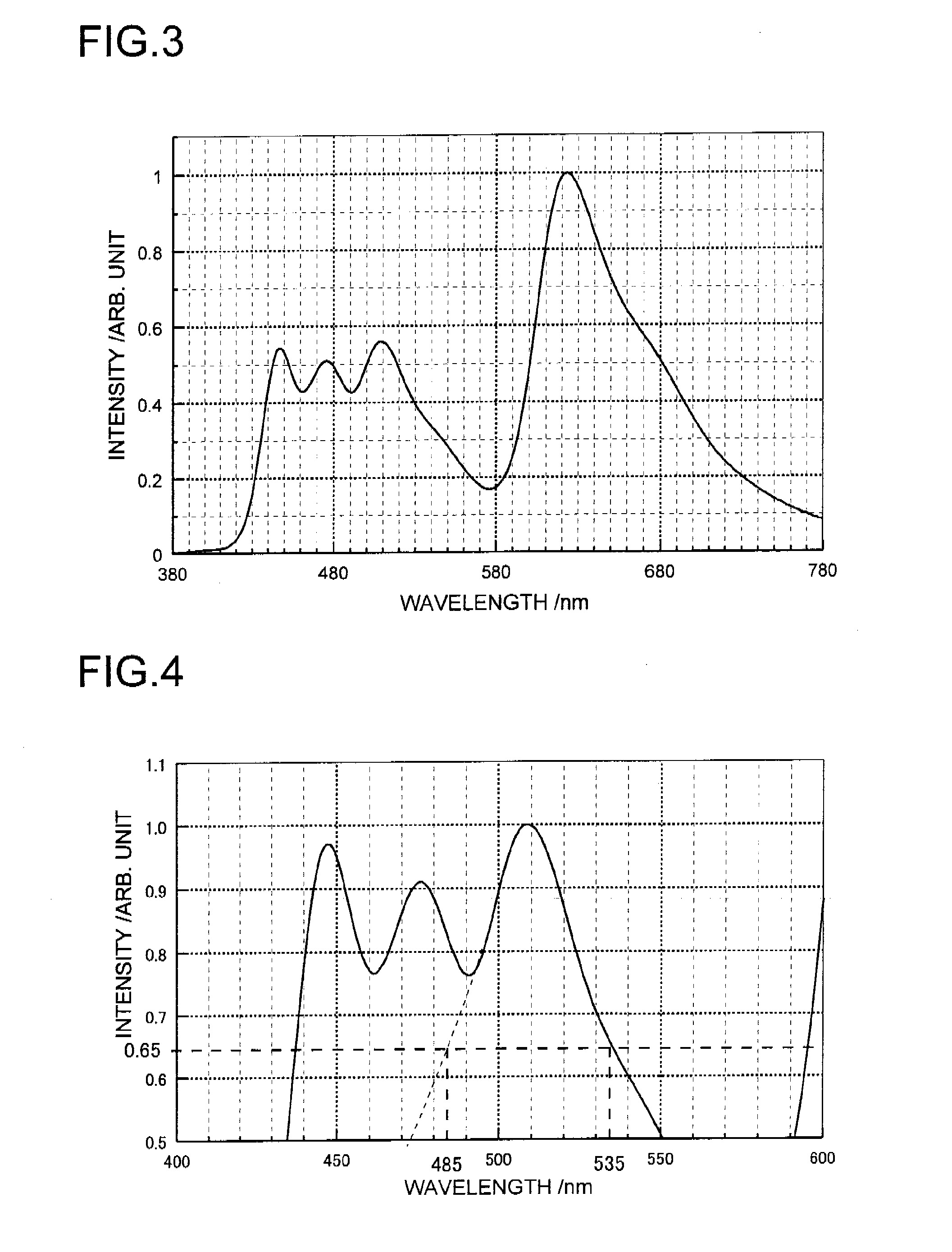Organic electroluminescence element, and illuminating device and display device therewith
- Summary
- Abstract
- Description
- Claims
- Application Information
AI Technical Summary
Benefits of technology
Problems solved by technology
Method used
Image
Examples
first embodiment
[0076]A first embodiment of the present invention will be described below with reference to the drawings. FIG. 1 is an outline structure diagram of an organic EL element according to the first embodiment, and FIG. 2 is an enlarged partial plan view of a diffraction grating.
[0077]First, the structure of the organic EL element 10 will be described. As shown in FIG. 1, the organic EL element 10 has a first electrode 12, a diffraction grating 13, a light-emitting layer 14, and a second electrode 15 provided in this order on a transparent substrate 11.
[0078]As the transparent substrate 11, any transparent material such as glass or resin may be used. There is no particular limitation on the kind, such as glass or plastic, of the material, examples of preferably used materials including glass, quartz, and transparent resin film. Particularly preferable is resin film that can make the organic EL element 10 flexible. The surface of the resin film may be coated with a film of an organic or in...
second embodiment
[0130]A second embodiment of the present invention will be described below with reference to the drawings. FIG. 5 is an enlarged partial plan view of a diffraction grating according to the second embodiment. The second embodiment is similar to the first embodiment in the structure of the organic EL element 10, but differs from it in that the diffraction grating has a square lattice. Accordingly, substantially the same parts between the two embodiments are identified by common reference signs.
[0131]In this embodiment, as shown in FIG. 5, the diffraction grating 13 has a square lattice. Here, when the grating constant of the square lattice is r, defining x- and y-axes and vectors p and q—the fundamental translational vectors—as shown in FIG. 5 gives
Vector p=(r,0)
Vector q=(0,r)
[0132]Accordingly, substituting (px, py)=(r, 0) and (qx, qy)=(0, r) in the formula representing the period dMN of the modulation structure on the diffraction grating 13 gives
dMN=r / √(M2+N2)
[0133]For example, assum...
third embodiment
[0143]A third embodiment of the present invention will be described below with reference to the drawings. FIG. 7 is an enlarged partial plan view of a diffraction grating according to the second embodiment. The third embodiment is similar to the first embodiment in the structure of the organic EL element 10, but differs from it in that the diffraction grating has a triangular lattice. Accordingly, substantially the same parts between the two embodiments are identified by common reference signs.
[0144]In this embodiment, as shown in FIG. 7, the diffraction grating 13 has a triangular lattice. Here, when the grating constant of the square lattice is r, defining x- and y-axes and vectors p and q—the fundamental translational vectors—as shown in FIG. 7 gives
Vector p=(r,0)
Vector q=(−r / 2,√3×r / 2)
[0145]Accordingly, substituting (px, py)=(r, 0) and (qx, qy)=(−r / 2, √3×r / 2) in the formula representing the period dMN of the modulation structure on the diffraction grating 13 gives
dMN=√3×r / {2×√(M2...
PUM
 Login to View More
Login to View More Abstract
Description
Claims
Application Information
 Login to View More
Login to View More - R&D
- Intellectual Property
- Life Sciences
- Materials
- Tech Scout
- Unparalleled Data Quality
- Higher Quality Content
- 60% Fewer Hallucinations
Browse by: Latest US Patents, China's latest patents, Technical Efficacy Thesaurus, Application Domain, Technology Topic, Popular Technical Reports.
© 2025 PatSnap. All rights reserved.Legal|Privacy policy|Modern Slavery Act Transparency Statement|Sitemap|About US| Contact US: help@patsnap.com



